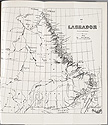
Case One - Introduction
Labrador Inuit come from a culture known to archaeologists as Thule. They arrived from the north in the late 15th century. Living in small nomadic groups, the Inuit had been entirely self-sufficient, dependent upon hunting, fishing and gathering for their survival until their contact with European explorers, whalers, fishermen and missionaries.
The Moravians were a group of German Protestants who first established missions in Greenland with permission of the Danish government. In 1769, the Moravians were granted one hundred thousand acres on the coast of Labrador by the British government to establish stations at equal distances in order to insure "unhampered operations" and in the same year purchased a large ship in order to service Labrador trade. The Moravians acted as both missionaries and traders with the Inuit people, and many of their efforts completely transformed the Inuit way of life.
A second influential force in Labrador was Sir Wilfred Grenfell, a medical missionary who wrote extensively about his work in Labrador in the early 20th century to provide medical care to fishermen and Inuit as far north as Hopedale. The International Grenfell Association (IGA) established hospitals, trained nurses and built schools throughout the province.
















